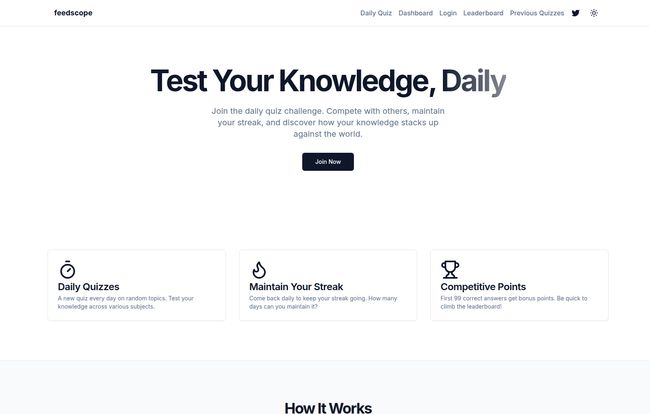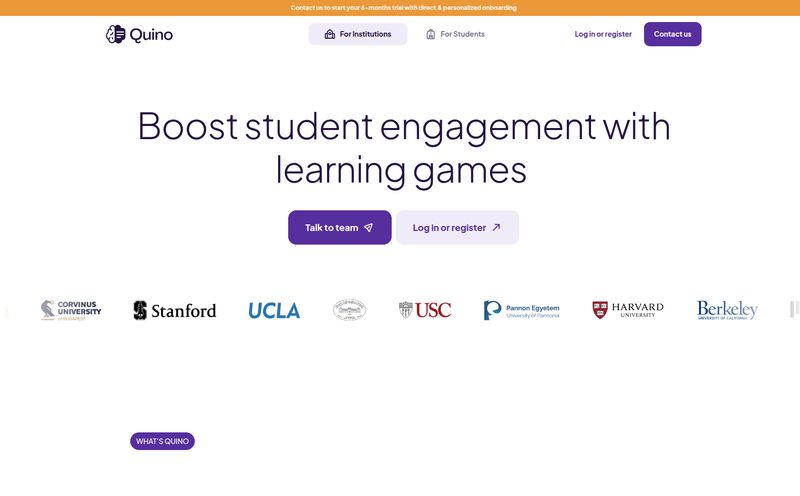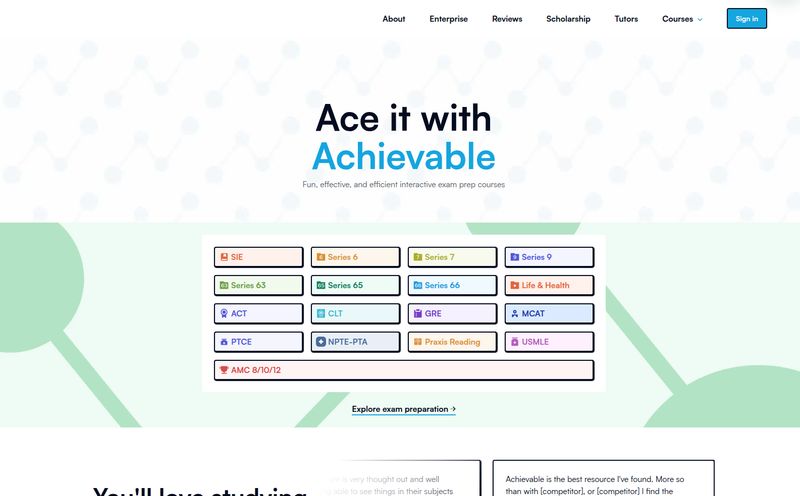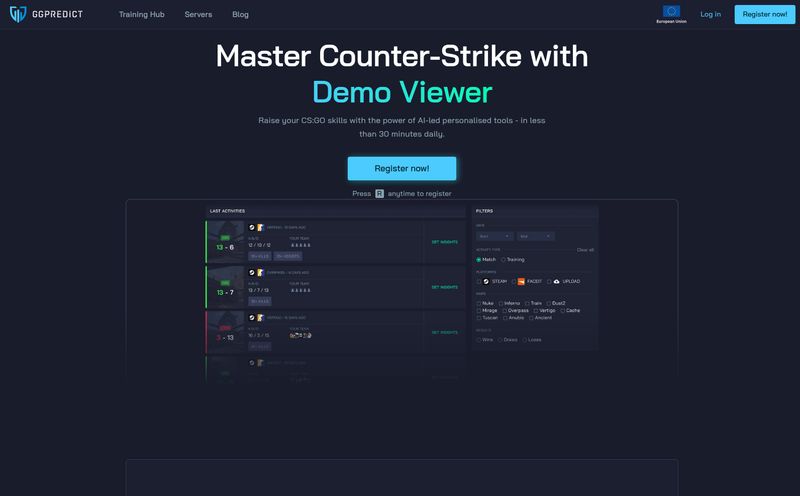Every now and then in the SEO and SaaS world, you stumble upon a tool that makes you tilt your head and go, "Huh." You know the feeling. It’s not bad, just… unexpected. That was me, about an hour ago, when I first landed on Feedscope. My mission was simple: check out this new tool that's supposed to help founders with feature requests. Standard stuff.
What I found was, well, a quiz. A really slick-looking daily quiz platform, complete with leaderboards, streaks, and competitive points. For a second, I thought I'd clicked the wrong link. Was this some kind of gamified brain-training app? Did I get my wires crossed? But no, the name was right. Feedscope. It turns out, this tool is living a double life. It’s the Clark Kent of SaaS—by day, a serious tool for product managers, and by night, a competitive quizmaster for the masses.
And honestly? I’m intrigued. So let's pull on this thread together and see what we unravel.
So, What's the Real Deal with Feedscope?
After a bit of digging, I got to the bottom of it. Feedscope is not one thing, but two distinct platforms rolled into one brand. It's an unusual pairing, like pineapple on pizza—some people will swear by it, others will run for the hills. I'm still deciding which camp I'm in.
For the Founders and Product Managers
This is the part I originally came for. At its core, Feedscope promises to be a powerful ally for anyone building a product. The idea is to cut through the noise of user feedback. We’ve all been there: a backlog overflowing with hundreds of user suggestions, a C-suite with a “great new idea,” and the dev team just wanting a clear, prioritized list. Feedscope claims to identify, analyze, and prioritize top feature requests with data-driven precision. This is music to my ears. Making decisions based on actual data instead of the 'loudest person in the room' principle is the holy grail of product management. It ensures you’re building what users actually want, not just what you think they want.
For the Trivia Buffs and Knowledge Seekers
Then there's the other side of the coin, the one that greets you on the homepage. It’s a full-blown daily quiz platform. Think Wordle, but for general knowledge. Every day at midnight, a new random quiz appears. You answer questions, maintain a streak, and compete for points on a global leaderboard. It’s fun, it’s addictive, and it’s a brilliant way to keep your mind sharp. I can already see myself getting way too competitive about this.

Visit Feedscope
Let's Talk About That Quiz System
Since the quiz is the public-facing part of Feedscope, let's break it down. The mechanics are simple but effective, tapping right into those psychological triggers that make gamification work so well.
First, a new quiz drops every day at midnight. This creates a daily habit, a little ritual. You answer the questions, and your score is based on how quickly you answer correctly. The real kicker is the bonus point system. According to their site, the first person to answer correctly gets a whopping 100 points. The second gets 99, the third gets 98, and so on. After the 100th person, everyone else just gets a single point for a correct answer. It’s a fierce race to be first, and I can respect that.
Then, of course, there's the streak. Miss a day, and your hard-earned streak goes back to zero. It’s the same simple-yet-brutal mechanic that has kept me opening the Duolingo app for over 500 days straight. It just works.
The Good, The Quirky, and The Missing Info
No tool is perfect, and my job is to look at it with a critical eye. So here's my honest take on Feedscope's highs and lows.
On the plus side, the concept of data-driven feature prioritization is a massive win. For any startup or established company, this is a genuine problem that needs solving. The quiz platform is also incredibly polished and engaging. It's fun, competitive, and genuinely educational. It's a great little daily mental workout.
But there are some quirks. The main one being, why are these two things together? More on that later. A more practical issue is that the quiz topics are completely random. One day it might be 90s sitcoms, the next it could be astrophysics. This is great for generalists, but if you're looking to test your knowledge in a specific niche, you're out of luck. Also, and this is a big one for the SaaS side of things, there’s very little information about how the feature request analysis actually works. What's the algorithm? Does it use AI? Natural Language Processing? The details are a bit of a black box, which can make it a tough sell for data-focused PMs who want to know what’s under the hood.
And that brings me to the missing piece: the pricing. I went looking for a pricing page, a standard practice for any SaaS review, and I hit a 404 error. The page simply wasn't there. Maybe it’s in development, or maybe they’re focusing on the quiz side first. Either way, it's impossible to gauge the cost of their feature prioritization service right now, which is a pretty big ommission.
So, Who Is This For, Really?
This is the million-dollar question, isn't it? The audience for Feedscope is split right down the middle.
- Product Teams & Founders: You're here for the serious business. You need a way to manage feedback and build a better product roadmap. The promise of Feedscope is tantalizing, but the lack of detail and pricing might make you hesitate.
- Casual Users & Trivia Fans: You're here for the fun. The daily quiz is a fantastic, free distraction. You want to test your wits, climb the leaderboard, and maintain that precious streak.
My best guess? This is a clever top-of-funnel marketing strategy. The daily quiz is a fun, free, and potentially viral way to get the Feedscope name out there. It builds a community and draws in eyeballs. The hope is probably that some of those eyeballs belong to founders and product people who, after enjoying the quiz, might say, "Hey, what's this feature prioritization thing they also do?" It's a long play, and a very interesting one. It's certainly more creative than just running Google Ads.
Frequently Asked Questions about Feedscope
- Is Feedscope free to use?
- The daily quiz platform appears to be completely free to join and play. As for the feature prioritization service for founders, the pricing is not currently available on their website, so we can't confirm if there's a free tier or what the paid plans look like.
- How does the quiz scoring system work?
- You earn points for correct answers. The system heavily rewards speed. The first person to get a perfect score gets 100 points, the second gets 99, and so on. After the top 99, everyone else gets 1 point for a correct answer. This makes the competition for the top spots very intense.
- Can I choose my quiz topics on Feedscope?
- No, not at the moment. The quizzes are on random topics and change daily. This is part of the challenge—you never know what you're going to get!
- What kind of feature requests can Feedscope analyze?
- The website doesn't provide deep technical details on this. It's designed to help prioritize user feedback, which suggests it can handle qualitative data from various sources like support tickets, reviews, or feedback forms. However, the exact mechanism for analysis is not specified.
- Is Feedscope better for founders or for quiz lovers?
- Right now, it's more developed and accessible for quiz lovers. The feature prioritization tool seems to be the core business offering, but it's less visible and detailed on the site. So it depends on what you're looking for!
My Final Thoughts
Feedscope is a fascinating case study. It's a tool with a dual identity, trying to serve two completely different masters. Will it succeed? I'm not sure. But I admire the ambition. The quiz is a genuinely fun and well-executed product that I'll probably be checking daily.
For the founders and product managers out there, I'd say keep Feedscope on your radar. If they can flesh out the details of their feature prioritization engine and provide clear pricing, it could become a really valuable asset. For now, it remains an interesting, slightly mysterious tool that’s one part serious business, one part pure fun. And in a world of look-alike SaaS tools, maybe that's not such a bad thing.



